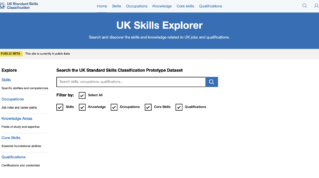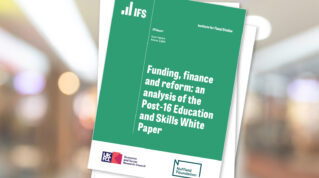For nearly a decade the landscape for level 3 health and social care has been stable, offering a clear route for adults and apprentices and another for 16-19 learners. But that’s all set to change.
Back in 2023, NCFE identified the need for clear entry pathways into the social care workforce as part of our Sector Spotlight report.
It highlighted the risks of reducing the number of entry points and the need for action to ensure those who want to pursue a career in the sector can access the right course, including addressing the absence of funded, specific qualifications for social care.
What happens when a pathway disappears?
A year later, the Department for Education published its post-16 qualification reform review. As part of this first cycle, awarding bodies were tasked with developing new technical provision in those sectors that overlapped with first and second-wave T Levels – health and science being among those areas.
However, the plan to defund most level 3 health and social care provision left policymakers with a problem: there is no social care T Level and, therefore, there would be no level 3 provision available to learners from 2026 onwards.
Before pausing the reforms, the DfE wisely proposed one further short ‘mini cycle’ of approvals specifically focused on level 3 social care. Here, awarding organisations had the opportunity to submit level 3 technical qualifications in adult social care, funded from August 2026.
Last month, it was announced that NCFE was the only awarding body to have any level 3 technical qualifications approved in adult social care through the post-16 reforms. This means, whilst existing technical provision will still be defunded, NCFE is making sure learners have a route into the social care workforce with new approved versions.
This is important because in Skills England’s recent publication of the Assessment of priority skills to 2030 report, adult social care is highlighted as containing some of the most in-demand occupations, and the highest need for level 3 qualifications.
How do learners currently access social care qualifications?
At present, learners wishing to study level 3 adult social care as an apprentice or through adult skills funding do so via a diploma in adult care. This is a standardised qualification delivered by multiple awarding organisations, including NCFE.
In 2023-24, there were over 8,000 adult-funded enrolments and almost 19,000 apprenticeship enrolments through this route.
Conversely, in the world of college 16-19 study programmes, learners usually undertake a level 3 extended diploma in health and social care. This kind of large technical qualification is offered by a range of awarding organisations.
In 2023-24, enrolments (almost all 16-19) on these large diploma programmes totalled close to 23,000. For context, the T Level in health had 3,534 enrolments that year.
Do T Levels directly replace existing diplomas?
It is a common misconception that T Levels replace these large extended diplomas. This September marked the fifth year the health T Level has been available, and most providers choose to run a level 3 health and social care extended diploma alongside it to ensure they have pathways suitable for all types of learners. We fully expect this need to continue.
Using the combined enrolment data, the removal of funding would leave around 31,000 learners without a viable level 3 pathway moving into the 2026-27 academic year. That is why we made it our number one priority to protect these routes.
What’s next for learners and providers?
The two key qualifications NCFE won approval for are a level 3 technical occupational entry in social care, designed for 16-19 study programmes, and a level 3 technical occupational entry in adult care, designed for adult learners or apprentices.
There was a real concern that following the outcome of the level 3 review, students could be left without viable options to pursue a vocational course in social care through a classroom-based route.
Thankfully, having these pathways approved means we can begin to address these acute recruitment challenges, and provide some stability and clarity for both providers and learners.
















Your thoughts